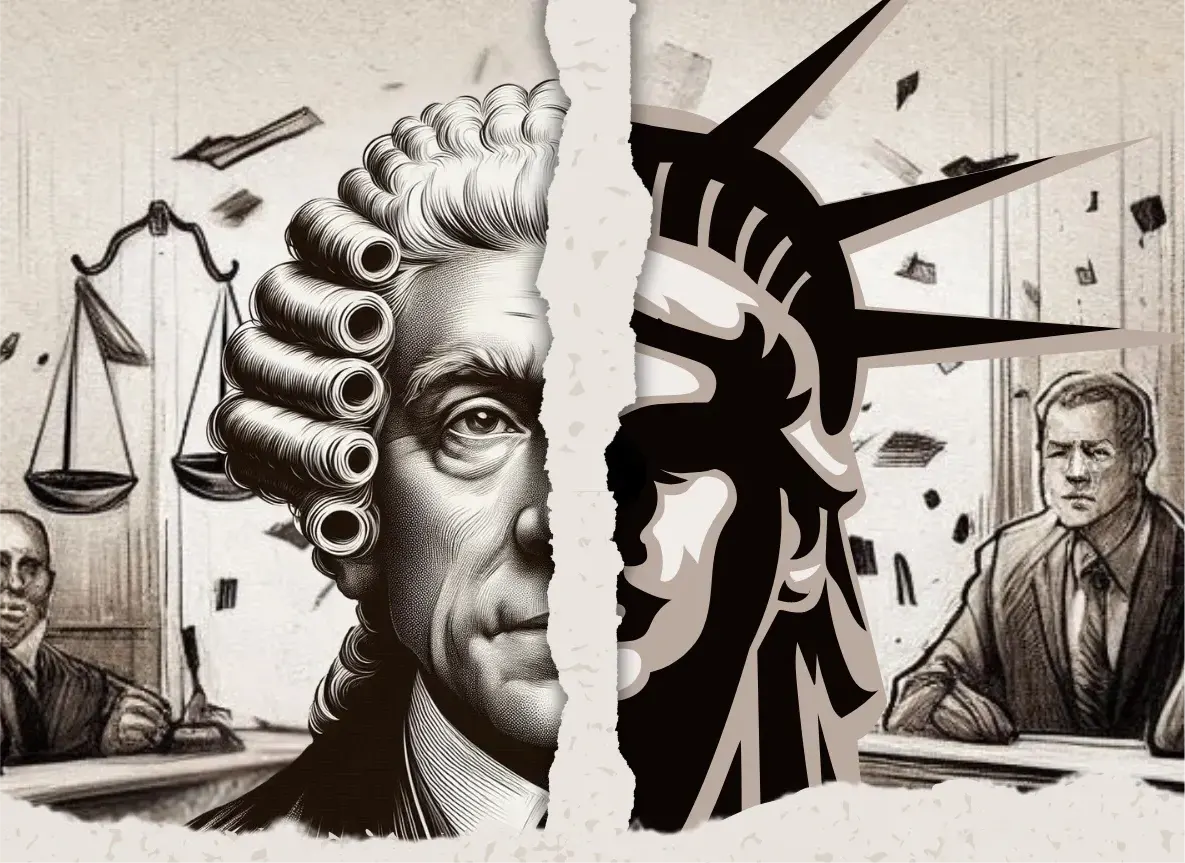10 Famous Trials That Changed History

Published by Crimson Cloak Publishing
and listen to the companion podcast miniseries In Dispute via the links below.
Expanded Table of Contents
In Dispute Podcast Miniseries Adapted From The Book
How Would You Decide? 10 Famous Trials That Changed History

"*" indicates required fields
Listen to the Companion Podcast Miniseries In Dispute on the Legal Talk Network
Jacket Flap
Pull up a chair and have a seat at the counsel table. You’re going to sit right next to the lawyers in the throes of litigation while they fight off objections from opposing counsel, walk up to the sidebar at the bench to hear what the judges say privately and deal with anxious defendants as they stare down death sentences, long jail terms, big fines, constitutional questions, and large verdicts.
You’ll have an intimate look through the eyes and ears of a double Board-certified civil trial advocate who’s been in and around the trenches we’re about to visit for his nearly forty-year legal career. Author J. Craig Williams has tried innumerable cases, starting his career as a Certified Practicing Law Clerk while in law school. As a law student at the University of Iowa College of Law, he practiced in Iowa’s Linn County Public Defender’s Office, where he tried and won a week-long jury trial, 15 trials before a judge and earned a published opinion in his client’s favor from the Iowa Supreme Court.
As a newly-minted lawyer in California, he switched sides and volunteered for the District Attorney’s Office in the state’s largest county, San Bernardino, and prosecuted numerous criminal cases to favorable verdicts. As a civil lawyer who’s practiced for more than twenty years, he now regularly tries cases for corporate defendants in complex business litigation cases and criminal matters for white-collar defendants, continuing his winning streak. He has been recognized as one of the top 100 lawyers in Southern California, was named a Fellow in the Litigation Counsel of America in June 2015, an invitation-only award given to the top one-half of one percent of North American lawyers, judges and law professors, and he taught Trial Advocacy at his alma mater, the University of Iowa College of Law, where he graduated with distinction in just more than two years.
Craig is best known for creating a new copyright law that requires websites to pay artists for their streaming music. His seminal appellate case before the Ninth Circuit, Fonovisa v. Cherry Auction 76 F.3d 259 (1996), established for the first time the law of contributory copyright infringement. His case was cited as the precedent to shut down Napster, the first streaming music platform caught ripping off songs and distributing them across the Internet for free. He’s still waiting for his honorary Emmy, Grammy, Oscar, and Tony awards for ensuring those artists are paid for the audio and video that streams their performances.
Get ready for a journey through the eyes, ears, and voice of a skilled trial and appellate lawyer and go back in time to look at a series of famous cases that turned out quite differently than most courtroom watchers predicted while the case wound its way through the court.
If you’re looking for more How Would You Decide?, then be sure to download the expanded electronic version of the book. This electronic version contains nearly 400 endnotes of hyperlinks and citations, giving you complete access to the entire trial transcripts. Be wary of the hyperlinks, though, many expire as time passes.
Electronic Version, Book websites and Bonus Materials
This website gives you the chance to vote chapter-by-chapter how you would have decided the outcome of the trials and help pick the Trial of the Century. Visit the website to see how other readers voted!
At the time of the first edition’s publication, How Would You Decide? will be published in three versions. First it will be published as both a hardbound book and an electronic version, which will be available online through Amazon, Kindle, and Barnes & Noble, as well as all other major booksellers. These links as well as a sample chapter from the book are available on 10FamousTrials.com.
This book has also been adapted by Nathan Todhunter into a chapter-by-chapter podcast series to be broadcast on the Legal Talk Network over the course of the year following the publication of book’s first edition. In that adapted and abridged podcast series, the author narrates the adaptation and approximately 100 voice actors play the live-action parts of the judges, lawyers, and witnesses from testimony quoted in the book.
Finally, the author anticipates recording an audio version of the book after its publication. Stay tuned! When available, the link will be posted to 10FamousTrials.com
You can see all the available versions on the book’s website.
In the electronic version, you’ll get an expanded version of How Would You Decide?. The book’s uncut electronic version includes links to author’s selections from the opening statements, trial testimony and closing arguments. There are nearly 400 endnotes, which contain hyperlinks and citations to the complete, unedited version of the trial transcripts in their original form, allowing you full access for expanded research and to the entire context of the quoted material.
On the book’s website www.10FamousTrials.com, you can also find the links to the author’s occasional blog, May It Please The Court, press materials and contact information.
Get the author's other books
How to Get Sued: An Instructional Guide
This is the author’s first hardcover book, which consists of short, humorous vignettes about the foolish things that people do to get in trouble with the law. The author offers advice how to avoid similar situations and how the law can affect you. The book makes a great present for anyone involved with the law and is sure to generate a good laugh.
On this book’s website, you can find a sample chapter, bonus materials including a free bonus chapter (So You’ve Been Sued?) information about the author J. Craig Williams, press materials and contact information.
The author and his wife, Christine Bartley Williams, wrote this paperback children’s book for their first batch of grandchildren, Naomi Jo and Kingston. Their grandchildren star as the characters in the book, who along with several of the family’s animals try to save Christmas. They must prevent Santa, his elves, and reindeer from being frozen by the Frost King.
The book was illustrated by Amelia Bernstein, a former Disney artist. It too is available on Amazon, Barnes & Noble, and all major booksellers, and links to purchase it are available on its website. Stay tuned for the audio version of this book, featuring the voices of Craig and Chris' grandchildren.




